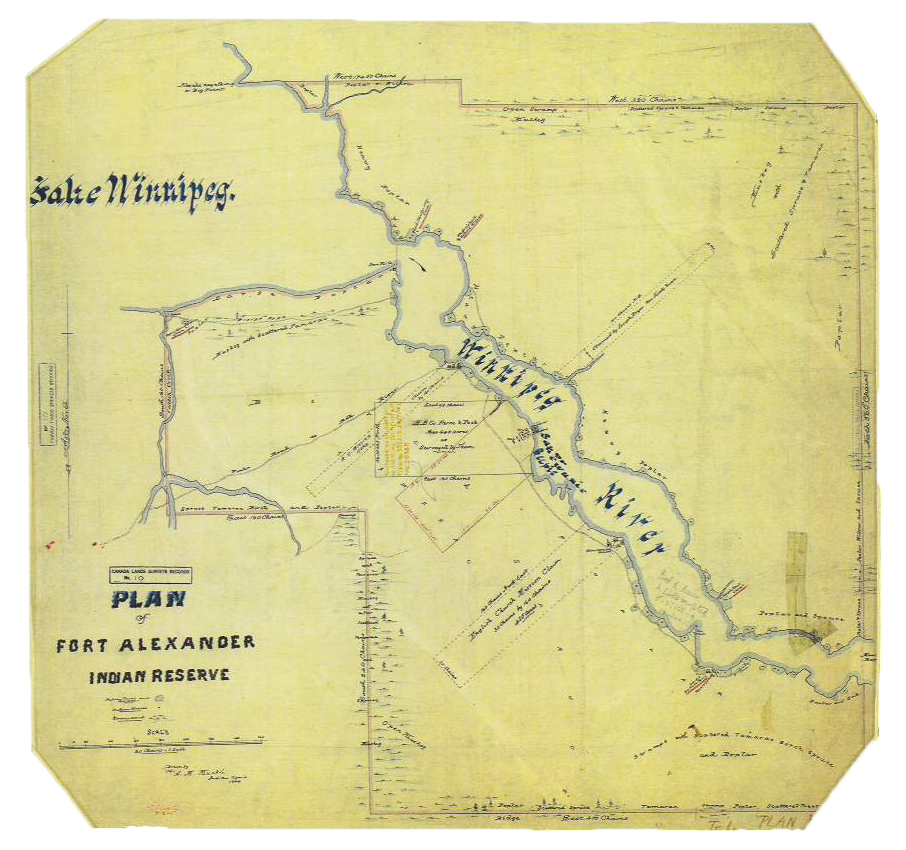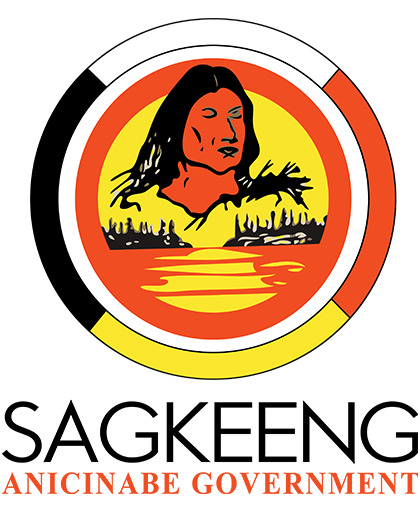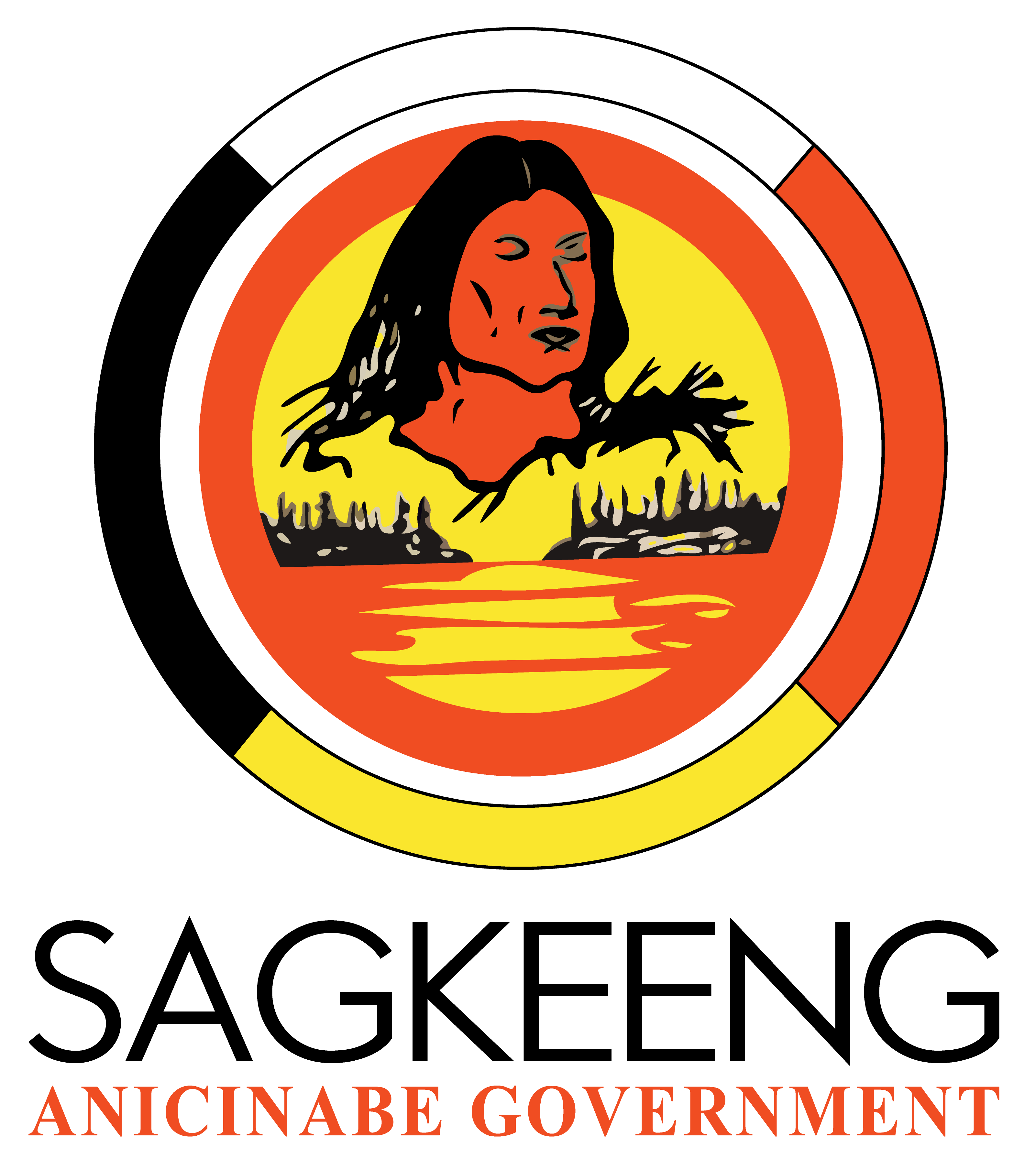A brief history of Sagkeeng
Sagkeeng is comprised of Anicinabe people who have resided at or near the Fort Alexander Indian Reserve #3 located along the Winnipeg River and Traverse Bay, since time immemorial.
The ancestors of the Anicinabe people of Sagkeeng signed Treaty 1 in 1871. The Fort Alexander Indian Reserve of approximately 21,674 acres was surveyed in 1874 and has a current band membership of 7,637 people with approximately 3,352 living on reserve.
Sagkeeng’s traditional territory includes land within Treaty #1 and land north and west of the Winnipeg River. In June 2007 the Sagkeeng Chief and Council filed a Statement of Claim seeking court recognition of unextinguished Aboriginal Title over traditional lands situated outside Treaty #1. In addition to this claim, in September 2010, Sagkeeng submitted a revised Treaty Land Entitlement claim which is currently before the Specific Claims Tribunal.
The Sagkeeng Anicinabe Government’s current leadership consists of five elected members: Chief Derrick Henderson, and Councillors Lin Dorie, John Courchene, Dylan Courchene, Erin Courchene, Henry Swampy and Tania Twoheart. This leadership was elected in April of 2019.
Sagkeeng holds its annual Treaty Days in the last week of July of every year. Everyone is welcome to enjoy the events which includes a community parade, various children events, pow wow, fireworks and community events.

Circa 4400 BCE
First human settlement in Sagkeeng area.
Circa 1700
People had their own treaties as nations before the arrival of Europeans, Sagkeeng was part of the territory of Cree and Assiniboine people. The first Oji-Cree and Métis appeared as the people began to mix.
1790
Anicinabe from Sault Ste. Marie migrated to Sagkeeng.
1800
Hudson’s Bay Company built Fort Alexander on the South Shore of the Winnipeg River.
1822
Hudson’s Bay Company amalgamated with North West Company’s Fort Bas de la Rivière, and it was renamed Fort Alexander.
1871
Treaty 1 signed. The treaty only applied to the South Shore of Sagkeeng.
1873
Treaty 3 signed. The treaty only applied to the North Shore of Sagkeeng.
1874
Fort Alexander Indian Reserve was surveyed.
1875
Treaty 5 signed. The treaty only applied to the North Shore of Sagkeeng.
1905
Catholic Fort Alexander Indian Residential School opened.
1949
Roman Catholic North Shore School opened.
1923-1933
Reserve land was stolen. The Chief was kidnapped, and held against his will until he agreed to lease the land. The land was illegally sold to Manitoba Pulp and Paper Company, creating Pine Falls, which started production in 1927.
1952
Northside Anglican School opened.
1961
Green School opened, Roman Catholic School closed on the north shore.
1963
Sagkeeng Consolidated School opened.
1966
Church of England Catholic Day School closed.
1967
Fort Alexander town site and first band office built. The FrontRunners, 10 standout First Nations track athletes of Fort Alexander Indian Residential School, were chosen to carry the Pan Am torch over a five- day, 800km run that started in St. Paul, Minnesota, and ended at the Winnipeg Stadium. However, just before delivering the torch, they were turned away at the stadium door, not allowed in, and denied carrying the torch—it was taken from them and given to a non-Indigenous runner.
1969
Catholic Fort Alexander Indian Residential School closed
1972
Catholic Fort Alexander Indian Residential School demolished.
1975
Anicinabe Community School built.
1987
Health Centre opened.
1990s
Push for self-government in Sagkeeng.
1991
Fire department opened.
1994
Sagkeeng Anicinabe High School built.
2003
Sagkeeng Junior High School opened.
2010
Tim Hortons opened.
2012
Sagkeeng’s Finest, a trio dance troupe that fused traditional clogging and tap, won the first season of Canada’s Got Talent.
2019
New Sagkeeng Anicinabe Community School opened.
Sagkeeng Anicinabe Government Office
Box 3 • Fort Alexander, MB R0E 0P0
Phone: 204.367.2287 • Monday – Thursday, 8:30am – 4:30pm | Friday, 8:30am. – 2:30pm
Sagkeeng Anicinabe Nation is comprised of Anicinabe people who have resided at or near the Fort Alexander Indian Reserve #3 located along the Winnipeg River and Traverse Bay, since time immemorial.
Recent News
Quick Links
Anicinabe people of Sagkeeng signed Treaty 1 in 1871.
Copyright © 2024 - Sagkeeng Anicinabe Government

